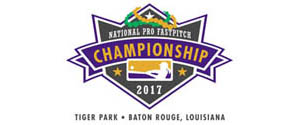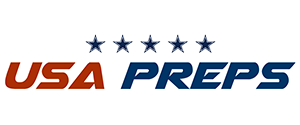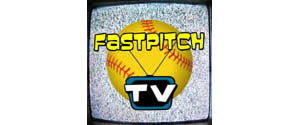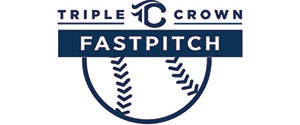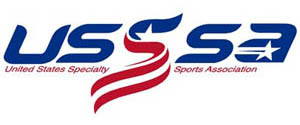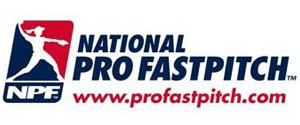The Umpire Corner
Pitcher receiving signals
7 posts
• Page 1 of 1
Does the pitcher need to be in full contact with the rubber when she receives her signals from her catcher? Or, can she receive her signals and then toe the rubber?
- ehamre63
- Posts: 2
- Joined: Mon Jul 09, 2012 10:40 pm
There's no requirement that the pitcher must be in contact with the pitcher's plate when taking her signal. But this is one of those commonly misinterpreted rules that comes up again and again, season after season.
The pitcher may take her signal before engaging the plate, and she can take it from the catcher, the dugout or whomever she wishes. Here's where the rule gets mixed up: Once the pitcher does engage the plate, the rules say that she must take, or simulate taking, a signal.
You can see that there is no requirement to actually take a signal at that point. "Simulate" taking a signal just means that the pitcher must pause before starting the pitch. All this is intended to do is prevent the pitcher from stepping on the plate and immediately rolling right through with the pitch to catch the batter off-balance or off-guard.
The pitcher may take her signal before engaging the plate, and she can take it from the catcher, the dugout or whomever she wishes. Here's where the rule gets mixed up: Once the pitcher does engage the plate, the rules say that she must take, or simulate taking, a signal.
You can see that there is no requirement to actually take a signal at that point. "Simulate" taking a signal just means that the pitcher must pause before starting the pitch. All this is intended to do is prevent the pitcher from stepping on the plate and immediately rolling right through with the pitch to catch the batter off-balance or off-guard.
Click Here >>> To Visit The Glove Shop On-Line
-

Bretman - Posts: 316
- Joined: Mon Mar 24, 2008 10:50 pm
Bretman wrote:
(Snip)
"Simulate" taking a signal just means that the pitcher must pause before starting the pitch.
And when you think about it, this does not mean a pitcher must even pause because after all certainly you can tale a sign while moving, can't you?
Bretman wrote:
All this is intended to do is prevent the pitcher from stepping on the plate and immediately rolling right through with the pitch to catch the batter off-balance or off-guard.
Which, it should be pointed out, is a Quick Pitch - which is a different result than an illegal pitch
.
- HugoTafurst
- Posts: 203
- Joined: Sat Jan 05, 2008 11:56 am
HugoTafurst wrote:Bretman wrote:
(Snip)
"Simulate" taking a signal just means that the pitcher must pause before starting the pitch.
And when you think about it, this does not mean a pitcher must even pause because after all certainly you can tale a sign while moving, can't you? Bretman wrote:
Bretman wrote:
All this is intended to do is prevent the pitcher from stepping on the plate and immediately rolling right through with the pitch to catch the batter off-balance or off-guard.
Which, it should be pointed out, is a Quick Pitch - which is a different result than an illegal pitch
.
That view doesn't pass muster in two out of the three major rule sets; and really doesn't meet the intent of the third.
In NFHS, the pitching rule says a) Prior to pitching, the pitcher must take a position on the plate with shoulders in line with first and third, and the ball in either hand or glove. Then, b) the pitcher shall take or simulate taking a signal. Only then, AFTER COMPLETING B can the pitcher bring the hands together.
In NCAA, the pitching rule indicates the hands may not come together until AFTER receiving the catcher's signal (either taking or simulate taking).
ASA, maybe doesn't say after, or must complete; but the obvious intent of listing the preliminary steps in an order should indicate that the step of bringing the hands together may not happen until the taking or simulating taking of the signal; and the taking or simulating taking cannot happen until the pitcher has fully engaged the pitcher's plate. This sequence is to break what used to be called "walking through" the pitch.
If you allow the three steps required to become one nonstop step, haven't you ignored the reason for the sequence of steps, and are allowing walking through the pitch? Isn't it easy enough to direct pitchers that if they don't pause then they violated the requirement to take or simulate taking the signal BEFORE bringing the hands together?
And, no, that isn't a quick pitch (a defined term in ASA, a pitch made with the obvious intent to catch the batter off balance, in NFHS, A quick pitch is a pitch delivered that catches the batter off balance or otherwise unprepared to bat, NCAA same); the batter may very well be ready. It is a violation of one requirement in the preliminary pitch sequence, which violation is an illegal pitch. ASA 6.1 EFFECT, Any violation of A-E is an illegal pitch. NFHS 6-1 Penalty (Art 1) An illegal pitch is called. NCAA 10.2 thru 10.2.2, Effect - Illegal pitch.
An illegal pitch which ALSO catches the batter off guard should have the stiffer penalty enforced.
-

UmpSteve - Premium Member

- Posts: 461
- Joined: Fri Aug 21, 2009 10:38 am
If the pitcher does not simulate taking a signal after stepping onto the pitching plate with the hands separated, it is a violation of the pitching requirements and is an illegal pitch.
- Comp
- Posts: 589
- Joined: Sun Jun 22, 2008 11:27 am
I think the phrase "taking" or "simulate" taking a signal is the confusing part of this though it shouldn't be if people actually read all the words in the rule. People try to read into it looking for something that isn't there.
As long as the pitcher takes a legal position in contact/on the PP with the hands separated and give me a pause before joining the hands, she is good to go.
As long as the pitcher takes a legal position in contact/on the PP with the hands separated and give me a pause before joining the hands, she is good to go.
- MTR
- Posts: 2317
- Joined: Thu Jan 03, 2008 5:21 am
Great feedback. Thank you all.
- ehamre63
- Posts: 2
- Joined: Mon Jul 09, 2012 10:40 pm
7 posts
• Page 1 of 1



